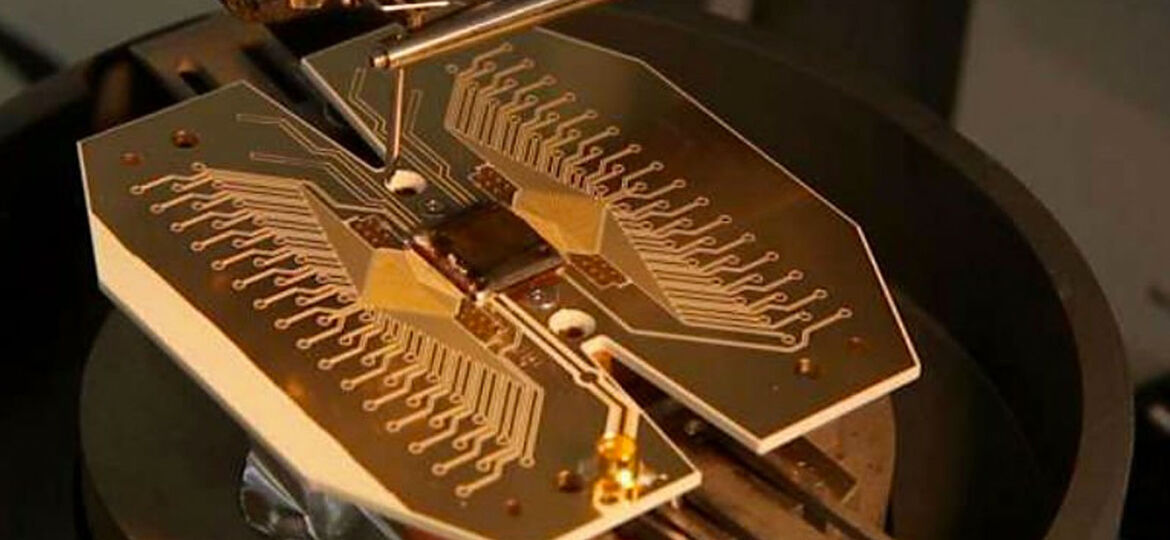
WHY THIS MATTERS IN BRIEF
Building the world’s first commercial quantum computer will require international collaboration, and a plan, and it looks like we now have that plan.
An international team, led by a scientist from the University of Sussex, and made up of scientists from Google, Aarhus University in Denmark, RIKEN in Japan and Siegen University in Germany, have published the first practical blueprint for how to build a quantum computer – the most powerful computer in the world. This huge leap forward towards creating a universal quantum computer is detailed in the influential journal Science Advances.
It’s long been known that quantum computers will help to revolutionise industry, science and commerce on an even larger scale than we witnessed with the invention of ordinary computers and the new work details how we could finally build a large scale quantum computer that would be hundreds of millions of times more powerful than today’s logic based computer systems.
Once operational, the computer’s capabilities mean it would have the potential to answer many questions in science; solve some of the most mind-boggling scientific and mathematical problems; unravel some of the deepest mysteries of the universe; create revolutionary new medicines and energy sources; and solve problems that an ordinary computer would take billions of years to compute.
The centerpiece of the work is a new invention that permits actual quantum bits to be transmitted between different individual quantum computing modules, which would be a world first, in order to create a fully modular, and more importantly, massively scalable machine.
Previously, scientists had proposed using fibre optic connections to connect individual computer modules. The new invention introduces connections created by electric fields that allow charged atoms, ions, to be transported from one module to another. This new approach allows 100,000 times faster connection speeds between individual quantum computing modules compared to current state-of-the-art fibre link technology.
“For many years, people said that it was completely impossible to construct an actual quantum computer. With our work, we have not only shown that it can be done, but now we are delivering a nuts and bolts construction plan to build an actual large-scale machine,” said Professor Winfried Hensinger, head of the Ion Quantum Technology Group at the University of Sussex, who led the research.
“It was most important to us to highlight the substantial technical challenges as well as to provide practical engineering solutions,” added Dr Bjoern Lekitsch, also from the University of Sussex.
As a next step, the team will construct a prototype quantum computer, based on this design, at the University.
This effort is part of the UK Government’s £270m ($337m) Quantum Information Technologies Hub, a collection of universities who’ve been challenged to accelerate the introduction of quantum technologies into the marketplace. It makes use of a recent invention by the Sussex team that can replace millions of laser beams required for large-scale quantum computer operations with the simple application of voltages to a microchip.
“The availability of a universal quantum computer may have a fundamental impact on society as a whole,” said Professor Hensinger, “without doubt it is still challenging to build a large-scale machine, but now is the time to translate academic excellence into actual application building on the UK’s strengths in this ground-breaking technology. I am very excited to work with industry and government to make this happen.”
The computer’s possibilities for solving, explaining or developing could be endless. However, its size will be anything but small. The machine is expected to fill a large building, consisting of sophisticated vacuum apparatus featuring integrated quantum computing silicon microchips that hold individual charged ions using electric fields.
The teams made the blueprint available in the hope that it would encourage scientists around the world to collaborate and further develop what’s undoubtedly going to be an awesome technology.

















[…] recently published the world’s first open source blueprint for a quantum computing device, and sure enough, no sooner than the designs go public we see two […]